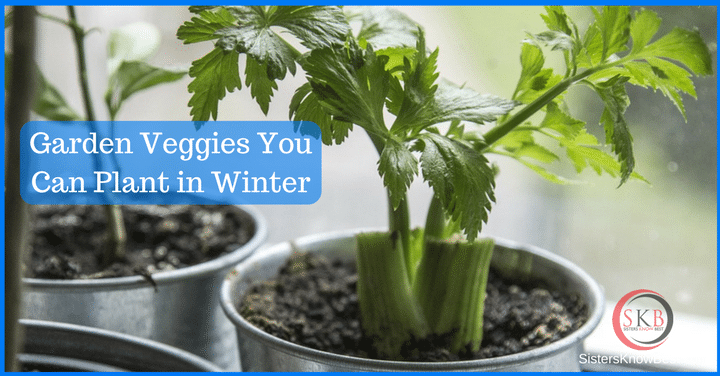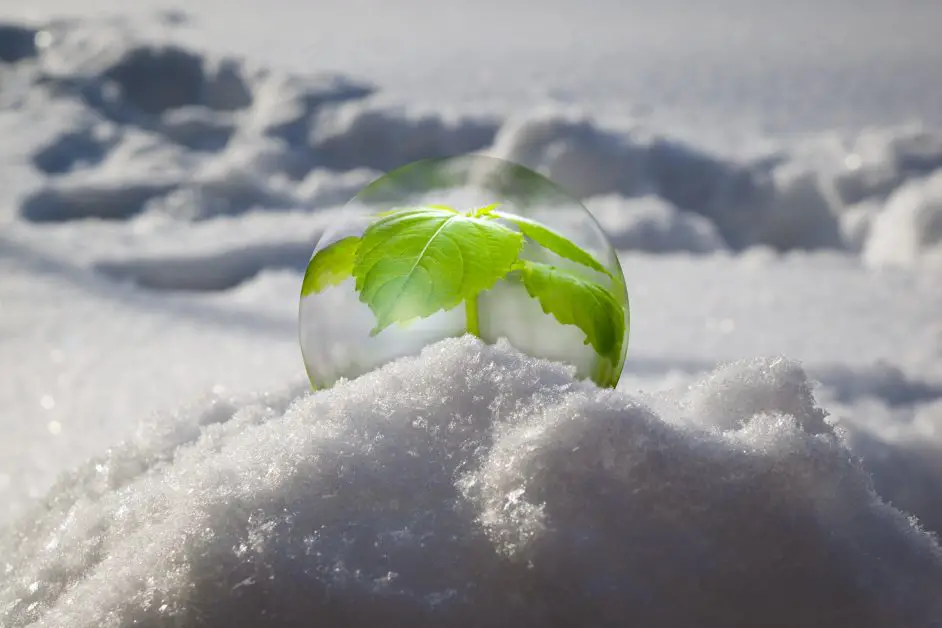Calling all Green Thumbs! Let’s talk about how to grow vegetables in the winter! If you’re like most backyard gardeners, you think planting time doesn’t start until after the danger of frost has passed. Depending on where you live, this could be anytime between March and May. Waiting until then to plant crops means you also have to wait until mid-summer or early fall to begin enjoying the fruits of your labor. Instead, try these garden veggies you can plant in winter and start using your homegrown veggies much sooner!
Favorite Winter Garden Veggies
Onions
As long as the ground is soft enough to dig in, you can plant onions. In much of the country, February is usually the right time. (Unless you live in Maine like one sister…) You can use onion seeds or sets to start your onions in winter. Onion sets are basically small onions that are dormant and look dried out. They bounce back to life once they’re in the ground. Just be careful not to plant them too deeply.
White Potatoes
White potatoes love cold weather. They actually start to rot when the ground temperature hits 80°F. This makes them a great crop to plant in winter and enjoy earlier in the growing season. Just like onions, February is a great time to plant white potatoes. A hard frost may kill back the greens, but the potatoes underneath won’t be harmed. Pro tip: Start your potatoes from cut chunks of potatoes that have cured for a week to increase your yield.
Cole Crops
For the uninitiated, cole crops include things like kale, broccoli, cauliflower, cabbage, and kohlrabi. These crops don’t grow well, or at all, in heat but thrive in cooler temps. Plant them between February and March. They also grow fairly quickly, so you might be able to start using them in meals as early as April or May (when the rest of your garden is just getting planted)!
Carrots
Carrots sometimes are tough to get to germinate. Making it even tougher is the fact that they hate heat. So if you’re planting them with the rest of your garden in April or May, that may be part of the trouble. Instead, sometime in February when the ground is just starting to thaw, sprinkle carrot seeds over the ground and then sprinkle a layer of topsoil over them. Keep them well watered and eventually you’ll see their little green tops starting to peek through. Pro tip: Carrot seeds are small and dark, making them difficult to see on the ground. Mix them with a small amount of sand to help you keep track of where you’ve put the seeds.
Lettuce
As long as the temperatures don’t drop below zero, lettuce can be planted, grown, and eaten all winter long. You’ll want to use frames to keep the snow off the lettuce bed and to make it easier for you to harvest. Just like carrots, lettuce seeds are tiny. You’ll want to use the sand trick when planting these too. Grow vegetables in the winter!
Peas
Unlike many garden crops, peas don’t like to be transplanted. It’s best to sow them directly where you want them to grow. Be sure they have something to climb on. They love cool weather. Start them in February and start eating peas right from the pod about the time you’re planting your tomatoes and cucumbers.
Spinach
Just like lettuce, carrots, and radishes, spinach feels the heat and bolts! This doesn’t mean it runs away. When plants bolt, they pop out flowers and seeds to germinate for the next growing season. You can still eat the leaves, but the flavor isn’t as good. If you want, bolting is also the time to harvest seeds. But if you’re after some really great spinach for salads, plant it in the winter. Just like lettuce, it can be planted, grown, and eaten all winter.
Radishes
Not only can you plant radishes in the cold weather, but they also germinate quickly. Radishes are a quick reward for your efforts. Great crop if you’re hoping to engage youngsters in winter garden veggies! In just 3-4 weeks from the time you plant the seeds, you’ll have edible radishes. As with spinach, radishes bolt in warm weather. The earlier you plant, the more time you’ll have to enjoy them.
Grow vegetables in the winter
Not only do these tasty winter garden veggies grow well in cold weather and give you a jump on your growing season, but they’re also naturally accustomed to lower light. So if you’re struggling to find something that will thrive in a shadier spot, give these veggies a try. And, honestly, who doesn’t like seeing new growth after a long, cold winter? Stay healthy, and grow something! Just seeing new growth on your windowsill will brighten your day. Guaranteed!
One last thing. For those who want a little guidance, we highly recommend this planting chart. It’s super helpful for planning your garden. Enjoy!










1 thought on “How To Grow Vegetables in the Winter”
Pingback: Stretching Supplies During the Coronavirus - Sisters Know Best
Comments are closed.